Ideon’s Absolute Stream: A
Front Runner from Greece
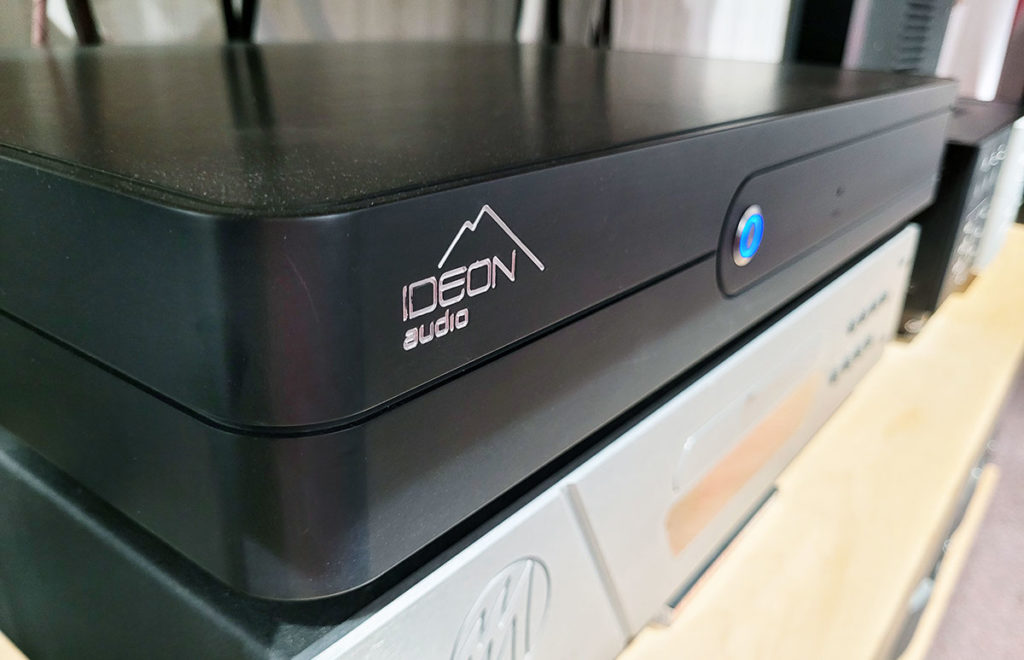
I can’t lie…from the moment I heard the Ideon Absolute suite of digital components, the Absolute Stream ($19,900), under consideration here, the Absolute Time ($10,000), and the Absolute Epsilon DAC ($47,000) at their US introduction, I was completely unprepared for, and swept away by what I heard.
That remarkable first experience was at a press-only event cosponsored by Michael Vamos, President of LA’s Audio Skies, and the US importer of the Ideon Audio gear, joined by Doug White, of “The Voice That Is”, during Capital Audio Fest 2021. You may recall that it was the first show to lead the way back from the darkness after the Covid-19 lockdowns were first enforced in the spring of 2020. What I heard during that audition was striking and you may see my show report HERE should you care to.
Given their amazing performance, it should come as no surprise to learn that when Michael reached out to ask if I’d like to live with the Ideon Absolute Suite, starting with an independent evaluation of the Stream, my answer was a resounding YES! And though I now am listening to the entire Ideon Absolute Suite, having added both the Absolute Time clock and Absolute Epsilon DAC, today’s evaluation will be limited to my initial experiences with the Stream. Rest assured I will have more to say on this synergistically engaging full suite of remarkable digital instruments as a whole soon enough. Stay tuned.
In the simplest of terms, the Absolute Stream is an audiophile music server/streamer whose purpose is relatively straightforward. It is a device built exclusively to render audio files as accurately as possible. They may be stored in any number of locations, over the internet, from a streaming service, or an internal or external file storage system like a hard drive or NAS. The Stream does include the option for local solid-state drive storage from 1 to 4 terabytes. The system can support files up to 384kHz PCM, up to 32 bit-depth, and DSD files, 2.8MHz, 5.6MHz, 11.2Mhz, or 22.4MHz, which are 64, 128, 256, or 512 times denser than the rate of a standard audio CD, respectively.
 At just shy of fifty pounds, measuring 19.2 inches wide, by 13.7 inches deep, and standing 4.3 inches tall, with rounded front and back corners, it presents a rather stark but powerful appearance. This solid mechanical base housing is CNC milled from a massive, single block of aluminum in a process that takes over 15 hours to construct. The resultant chassis is available in silver or anodized black.
At just shy of fifty pounds, measuring 19.2 inches wide, by 13.7 inches deep, and standing 4.3 inches tall, with rounded front and back corners, it presents a rather stark but powerful appearance. This solid mechanical base housing is CNC milled from a massive, single block of aluminum in a process that takes over 15 hours to construct. The resultant chassis is available in silver or anodized black.
Aside from the etched and painted logo in its upper left corner, there is only the power button and stand-by LED near the center of its faceplate.
From left to right, the rear panel houses two USB A digital audio outputs, the leftmost output offers a pure signal only, the right provides the signal with a supplemental 5V bus. Next, in a group near the center, comes the RJ45 Ethernet Jack followed by two USB A 3.0 inputs to access, or import libraries stored on, USB drives. Finally, to the left, is the fused IEC power cord jack.
This superbly crafted high-performance device will play all your private file libraries, whether they are on an external hard drive, stored internally on the Stream (an added-cost option – I’ve lived with both versions now), or your Network Attached Storage system, as I use. Just as importantly, the Absolute Stream works as a Roon bridge rendering your music into the device’s CPU, and of course, it renders Internet streaming services such as Amazon, Qobuz, Spotify, or Tidal, though it has no provision for MQA. Does anyone even care about that any longer? I’m not sure…and I never have.
While all such file-serving devices must acknowledge their origins as a high-end computer fashioned to play music, the Ideon Stream was conceived as an audio playback device dedicated to music playback, rather than as a computer specifically tweaked to play music. In fact, they approached the Stream with a simplified approach – think purist or bare-bones, in an effort to avoid anything that may in any way offer any spurious noise or degradation to the resultant sonic performance.

The design and fabrication of the CPU board saw extensive deliberation and consideration, mainly with specific attention to the power supplies, extending to supply capacitors and the strict isolation of processes that are not needed to manage digital playback. Though very tight-lipped about specifics, they acknowledge that they have implemented a proprietary ultra-low ESR (equivalent series resistance) bypass power filter as well as a proprietary, upgradable, zero-noise rectification active bridging technology, to eliminate power supply diode-rectification noise. These are said to afford massive improvements in the transient current powering the CPU. This filtration, combined with the use of the Ideon software, delivers an otherwise unobtainable, greatly enhanced gain in overall sonic performance.
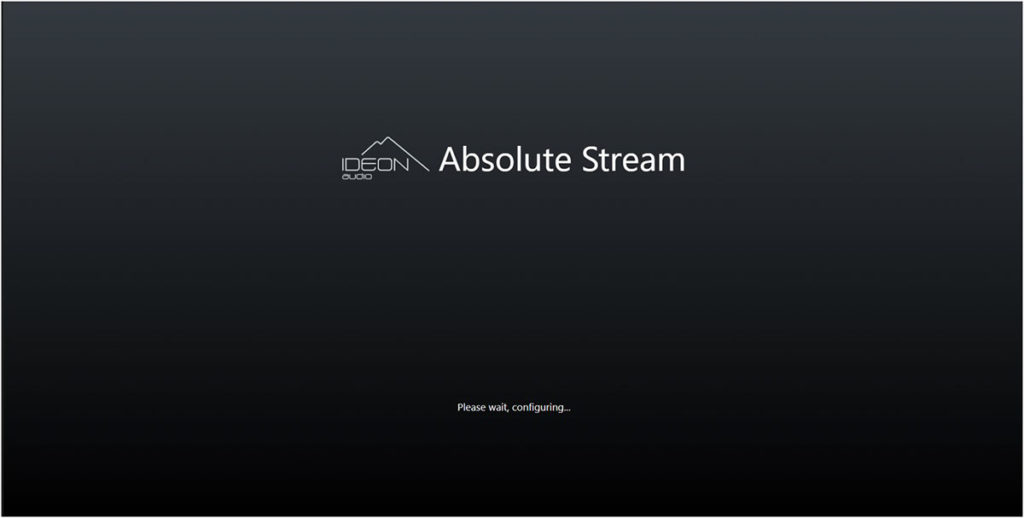
The Stream uses massively over-engineered linear power supplies. One serious advantage of the Absolute Stream circuit is the total absence of any switching power supplies – which are not even used in intermediate rolls, where they are often used for the CPU power rails. Further, it is powered with different voltage levels for specific parts of the device, using an abundance of ultra-low noise and discreet power lines feeding critical points of the circuit. Combined with the circuit’s remarkable stability and isolation, including constant phase and timing correction, in practice, when playing ONLY one song at a time, this effectively allows the CPU to be powered by four different ultra-low noise power supplies to deliver the different voltage levels the device requires.
Not content to stop there, for jitter elimination they have implemented a proprietary Femto-level reclocking module, one that is fully upgradable for future compatibility, embedded as a standard feature, not as an option with upgrade charges. This not only protects your investment, it helps to ensure a clean and purified signal at the final stage before the USB signal exits the Streamer, even without the use of an external reclocking device.
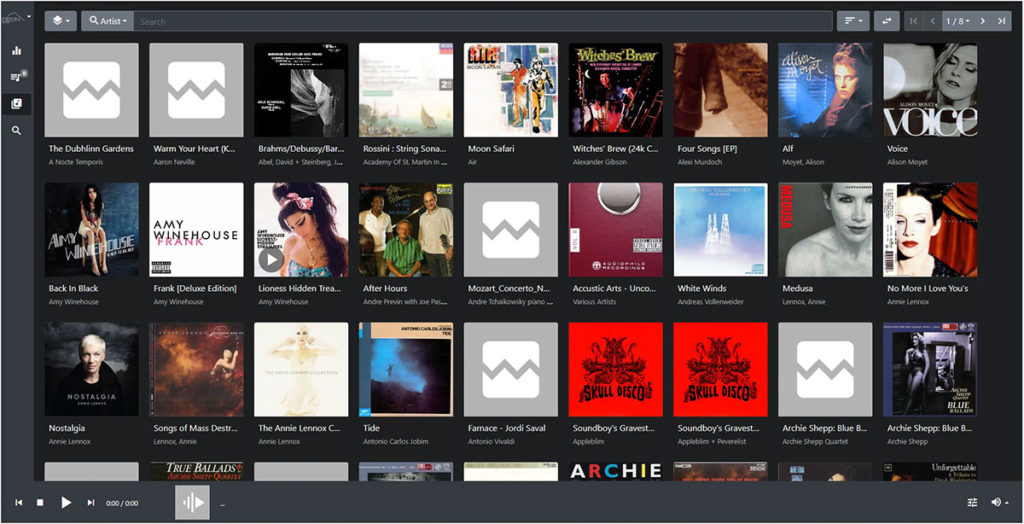
But perhaps the most important and unique individual technical achievement offered by the Ideon Stream is what they are calling Real-Time core playback. What this means is that when you send the command to play a song, that is when the song is uploaded into the memory – directly, fully prioritized for audio playback, with no latency, buffering, interpolation, or resampling prior to playback. In essence, prior to, and immediately after the playback of any song, the kernel of the CPU (which in this case is Linux) is completely empty, offering complete silence. There is no signal, no noise, no anything – just complete silence from the chip. As far as I have been able to ascertain, this live-core kernel playback methodology is the first and only such real-time kernel-based operation streamer available today. If anyone else is doing anything similar, they do not seem to be talking about it.
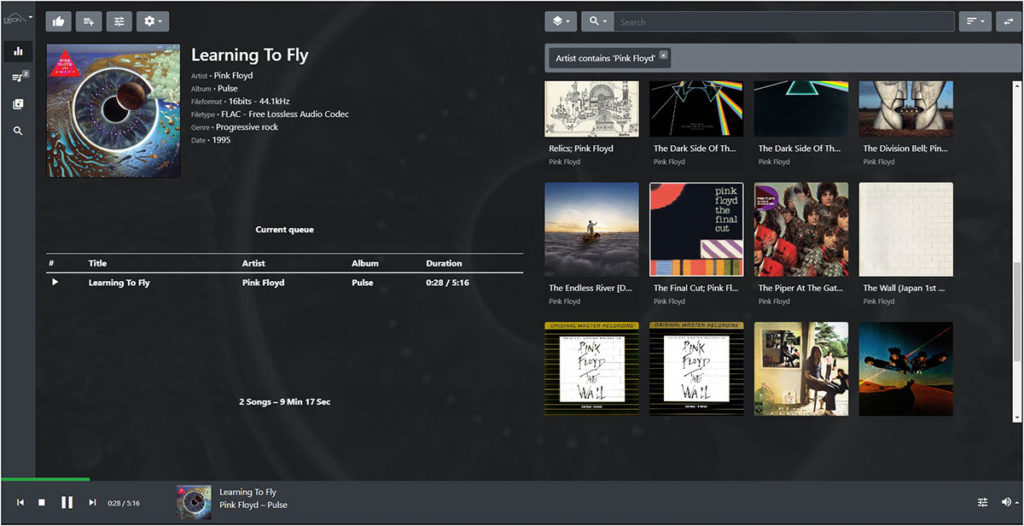
Now, because I began programming in 1971 while a sophomore in high school, and just recently retired as an IT Engineer/Analyst who is certified on both Microsoft and Apple platforms, I’ve chosen to build a Windows-based PC to use as a file server/Streamer. I started with a Lenovo ThinkStation P320 CAD Workstation with an Intel® Xeon® 3.50GHz quad-core CPU running 8 logical processors, with 32 GB of RAM, and a Samsung EVO Plus solid-state drive for the operating system.
The computer is further optimized for playing music with Fidelizer 8.10, an installed optimization utility that allows leveraging, managing, and prioritizing a computer’s core functionality, services, and processes. My primary streaming and music management software is Roon 2.0, but I also employ J River MediaCenter 31.
Files are then served from my Buffalo LinkStation™ 220 12TB Network Attached Storage system using a sonically selected Cisco router system and switches and is wired with all Audience Hidden Treasure Ethernet CAT7 cable. I have also installed the Hidden Treasure SATA cables inside the Workstation.
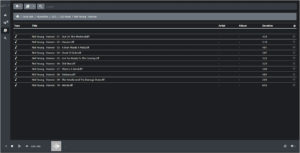
This absurdly optimized system represents a serious file serving system, one that everyone who has heard will verify sounds fantastic. How does the Ideon Absolute stream compare? Spoiler alert: this streamer is capable of rendering your file library or music service streams in one of the most unadulterated and inclusive-sounding manners I’ve yet experienced!
Once connected to my wired network via its rear panel mounted RJ45 jack, and recognized and added to Roon, I could access my music via either the Roon or the Ideon web-based interfaces from any mobile device or computer. While the Ideon web-based interface may not be as visually appealing or stylish as the Roon GUI (its Graphical User Interface), it is very straight-forward as these things go, and it offers considerable sonic benefits that I’ll elaborate upon soon enough.
Now the differences I’ve noted between my essentially state-of-the-art, über optimized file server and the Ideon Absolute Stream are not subtle. Before the arrival of the Stream, I had never really had any complaints about the exceptional sonic results I’d gotten from my hyper-optimized CAD workstation. But with the Ideon Absolute Stream as the source, the differences were, well, significant. Even when compared to some lesser-priced, extremely well thought of mainstream streamers, which is why none of them had ever supplanted my customized Windows server. But the Stream is notably better, and in a host of categories.
My listening with the Stream was initially done with two LampizatOr DACs, my own Baltic 4, and the simply exceptional LampizatOr Horizon, which will be fully reviewed here soon. And as absolutely outstanding as the Baltic 4 is (especially after my tube rolling), the results I’m cataloging here are based on my listening with the astounding Horizon.
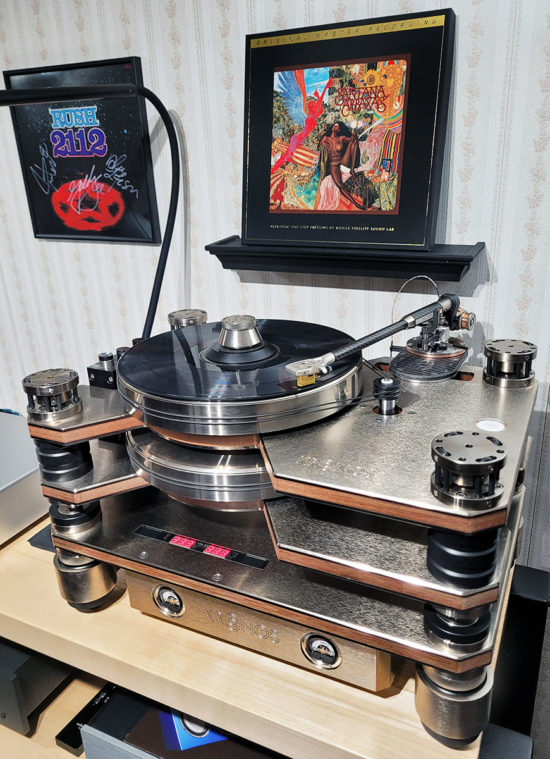
First, overall tonality is much more honest and luminous, with more notable fidelity in terms of timbral balance and texture. I was very pleasantly surprised to hear the ampler rendering of sounds like those created by the combination of rosin, gut, and string and the enriched fullness of tone on piano and even cymbals.
Next, I was utterly entranced by its clearly expansive display and lively enhancement of dynamic contrasts. This is expressed as wider ranging fluency of both macrodynamic event scaling and impact, as well as decidedly augmented articulation and shading down in the microdynamic realm. This was readily apparent in every genre of music, from Progressive Metal to string quartets and intimate jazz ensembles. The musical result is that crescendos are more explosive and vibrant, while subtle nuances and previously more veiled articulations, especially down closer to the noise floor, were more clearly demarcated and expressed.
Then there was the enhanced power and expressiveness of the lowest octaves, again, across the spectrum of genres. Now, I’m not suggesting that there was more bass, per se, but rather that it was portrayed considerably tighter, expressed with better control, offering more succinct rise and decay components, with overall better definition to pitch and bloom.
Overall, the gestalt of the listening experience using the Absolute Stream is that everything is expressed in a creamier and more immediate manner at the same time. You almost have to hear it to grasp the power of its remarkable results with file or streaming playback. And I cannot wait to share with you the synergy that the entire suite of Absolute products brings to the party!
Moving on to playback specifics, files are rendered superbly, with even my Redbook CD rips sounding the very best I’ve heard them recreated. And my high-res files, single, double, and even quad DSD files, were presented with a quality that approaches, occasionally bordering on sounding competitive with, the sonics routinely created with my world-class KRONOS/Etsuro analog front end.
It should be noted that, like many of the other proprietary streamers available today, as convenient and wonderful sounding as my file library is when played back using the Roon bridge option, resorting to the native Ideon software using its web-based interface on my mobile devices or computers was even more engaging. This method actually allowed for the maximum sonic benefits of those attributes I’ve already outlined that make this streamer so desirable, portraying the music even more faithfully and involvedly, delivering greater palpability, immediacy, presence, and dynamic expressiveness. So use the Ideon interface whenever you are not streaming, you won’t regret it.
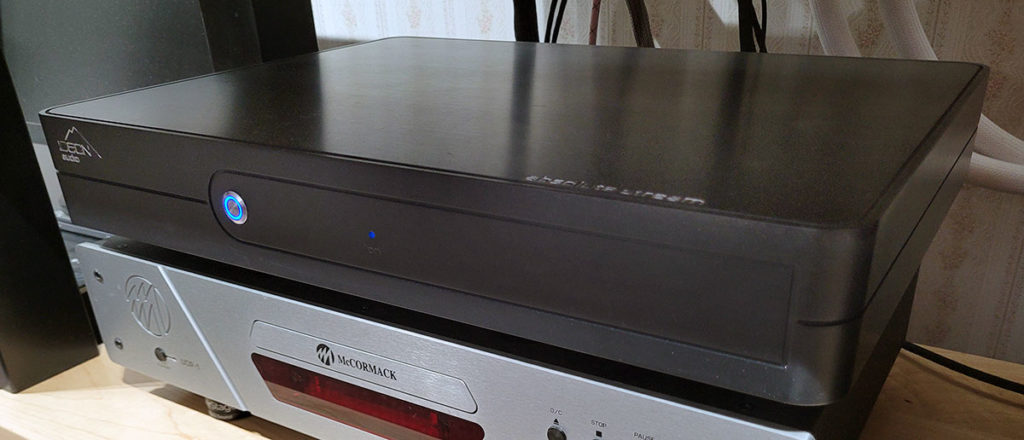 Beyond that, while somewhat title dependent, it has a frightening ability to render many streams like those from Qobuz in a manner so closely approximating the more realistic space and musical warmth of my analog front end that the Absolute Stream has undeniably earned its place at the front of the pack of today’s finest streamers. Honestly, even if it did nothing else as exceptionally well as it playes streaming content, this attribute alone would validate its purpose.
Beyond that, while somewhat title dependent, it has a frightening ability to render many streams like those from Qobuz in a manner so closely approximating the more realistic space and musical warmth of my analog front end that the Absolute Stream has undeniably earned its place at the front of the pack of today’s finest streamers. Honestly, even if it did nothing else as exceptionally well as it playes streaming content, this attribute alone would validate its purpose.
When you consider the whole sonic landscape so remarkably and effortlessly presented by this world-class streamer, the thorough attention to the detail of its design, its robust and enduring fabrication, its ease of setup and use, and – most importantly – its unassailable sonic performance, including its extraordinary fidelity of tone, texture, and bass, combined with its wildly vivid expressiveness, I think you’ll understand why this Streamer has earned a top spot on my short list of high-performance streaming sources, one that I can recommend without reservation.
System Details
Ideon Absolute Stream:
SUPPORTED FORMATS: (INPUT DEPENDENT): 44.1kHz to 384kHz PCM up to 32 bits, any DSD (up to 8xDSD)
SYSTEM SSD: 128GB for OS system
INTERNAL STORAGE: *Optional 1- 4TB for Music Libraries
DIGITAL AUDIO OUTPUT: 2 X USB with proprietary Re-Clocking (one with 5v rail, one without)
INPUT: Ethernet
EXTERNAL CONNECTIVITY: 2 X USB 3.0 for external HD Music Libraries
POWER SUPPLY: 3 X ultra-low noise full Linear power supplies (for all different voltage needs). No Switching power supply at any point of the device
DIMENSIONS: (W x H x D) 490 x 350 x 110 mm or 19.2 x 13.7 x 4.3 in
WEIGHT: 22 kg (~ 49 lbs)

 At just shy of fifty pounds, measuring 19.2 inches wide, by 13.7 inches deep, and standing 4.3 inches tall, with rounded front and back corners, it presents a rather stark but powerful appearance. This solid mechanical base housing is CNC milled from a massive, single block of aluminum in a process that takes over 15 hours to construct. The resultant chassis is available in silver or anodized black.
At just shy of fifty pounds, measuring 19.2 inches wide, by 13.7 inches deep, and standing 4.3 inches tall, with rounded front and back corners, it presents a rather stark but powerful appearance. This solid mechanical base housing is CNC milled from a massive, single block of aluminum in a process that takes over 15 hours to construct. The resultant chassis is available in silver or anodized black.

 Beyond that, while somewhat title dependent, it has a frightening ability to render many streams like those from Qobuz in a manner so closely approximating the more realistic space and musical warmth of my analog front end that the Absolute Stream has undeniably earned its place at the front of the pack of today’s finest streamers. Honestly, even if it did nothing else as exceptionally well as it playes streaming content, this attribute alone would validate its purpose.
Beyond that, while somewhat title dependent, it has a frightening ability to render many streams like those from Qobuz in a manner so closely approximating the more realistic space and musical warmth of my analog front end that the Absolute Stream has undeniably earned its place at the front of the pack of today’s finest streamers. Honestly, even if it did nothing else as exceptionally well as it playes streaming content, this attribute alone would validate its purpose.



